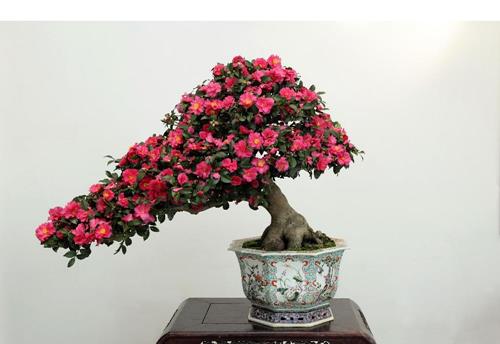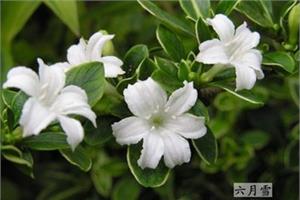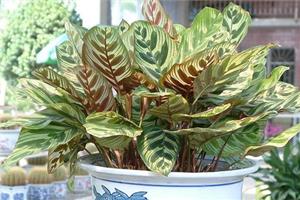How to raise Camellia and share the Tips of Camellia Culture
Now many people will raise plants at home, making home life full of vigor and vitality. The relative superiority of camellia is the choice of many people. Let's take a look at the breeding techniques of camellia. If you are also interested, come in and learn.

Culture methods of Camellia
First, light conditions, camellias avoid strong light, so we must pay attention to the sun when planting, spring and autumn require sufficient light, but in summer, we must avoid being exposed to direct sunlight, as long as camellias are exposed to strong light for too long, it is easy to die, if there are conditions, it is best to transplant to the sunshade.
Second, temperature attention, camellia is not cold-resistant nor heat-resistant, the most suitable temperature is 18-25 degrees, so the ambient temperature should not be too high and too low, otherwise it will affect its growth, especially in winter, the indoor temperature must be above 3 degrees. If it is lower than 0 degrees, it will be frostbitten.
Third, watering matters, camellias like a humid environment, so we must pay special attention to not too dry, not too wet, can not be wet when dry, generally can be more watering in spring, this is conducive to germination, summer should be watered both morning and evening, it is best to water the leaves, do not water when the plant is high temperature, autumn and spring, but in winter watering should pay attention, it is best to water before and after the plant And don't water it every day, preferably every two or three days.
Fourth, the main points of fertilization, camellias prefer fertilizer, so in the whole breeding process, we should pay special attention to the use of fertilizer, such as adding phosphorus and potassium fertilizer on the pot, but fertilization also has a degree, must not be too much, generally in the nearly half a year after flowering fertilization about 3 times, winter fertilization once on it, in order to make the flowers more beautiful, it is best to put more phosphate fertilizer in fertilizer.
Fifth, flower branch pruning, camellia pruning is very important, generally will affect the shape of branches and disease, weak branches cut off, as well as the arrangement of buds, once the buds are too dense, but also to comb, flowers should be picked in time after withering, can reduce the consumption of nutrients.
Sixth, turning the pot of camellias, which many people will ignore, many people will not turn the basin once planted. In fact, this is very wrong. Camellias are usually turned once every two years, and a large basin should be changed. Only in this way can it be beneficial to its growth. Special attention should be paid to the time of turning the basin, preferably in April. When turning the basin, we should be careful not to remove all the old soil and add a small amount of base fertilizer to it. And then water it.
Seventh, the prevention and control of diseases and pests, camellias are very easy to get sick, there are two common diseases-black mold, anthrax, then only need to spray 0.5 degree Bordeaux liquid, camellia pests are mainly tea tip moth, then the main cut off the tip of the insect.
Eighth, soil requirements, soil is the root of the growth of camellias, all nutrients of camellias are obtained from the soil, so the demand for soil is quite high, generally its soil contains high humus, PH value between 5-6.5, slightly acidic, the best soil configuration is: mountain soil 50%, sawdust or edible fungus residue 40%, cake fertilizer powder or livestock manure and phosphorus fertilizer powder 10%.
Ninth, air fluidity, the place where camellias grow requires extremely high air circulation, it is most suitable to grow in the breeze, but camellias are afraid of northwest wind and strong wind, because northwest wind and strong wind are easy to make water evaporate too fast, camellia supply and demand lose balance, which is not conducive to the growth of camellias.

The above introduction of this article, look forward to the need for your assistance, if you have other questions, you can pay attention to the No. 1 home network, for more information.
- Prev

Matters needing attention on how to cultivate June Snow
Matters needing attention on how to cultivate June Snow
- Next

Culture methods of peacock bamboo taro matters needing attention in peacock bamboo taro culture
Culture methods of peacock bamboo taro matters needing attention in peacock bamboo taro culture
Related
- Wuhan Hospital Iron Tree Blooming Result Was Instantly Frightened by the Gardener Master
- Which variety of camellia is the most fragrant and best? Which one do you like best?
- What is the small blue coat, the breeding methods and matters needing attention of the succulent plant
- Dormancy time and maintenance management of succulent plants during dormancy
- Minas succulent how to raise, Minas succulent plant pictures
- What are the varieties of winter succulent plants
- How to raise succulent plants in twelve rolls? let's take a look at some experience of breeding twelve rolls.
- Attention should be paid to water control for succulent plants during dormant period (winter and summer)
- Watering experience of twelve rolls of succulent plants
- Techniques for fertilizing succulent plants. An article will let you know how to fertilize succulent plants.

